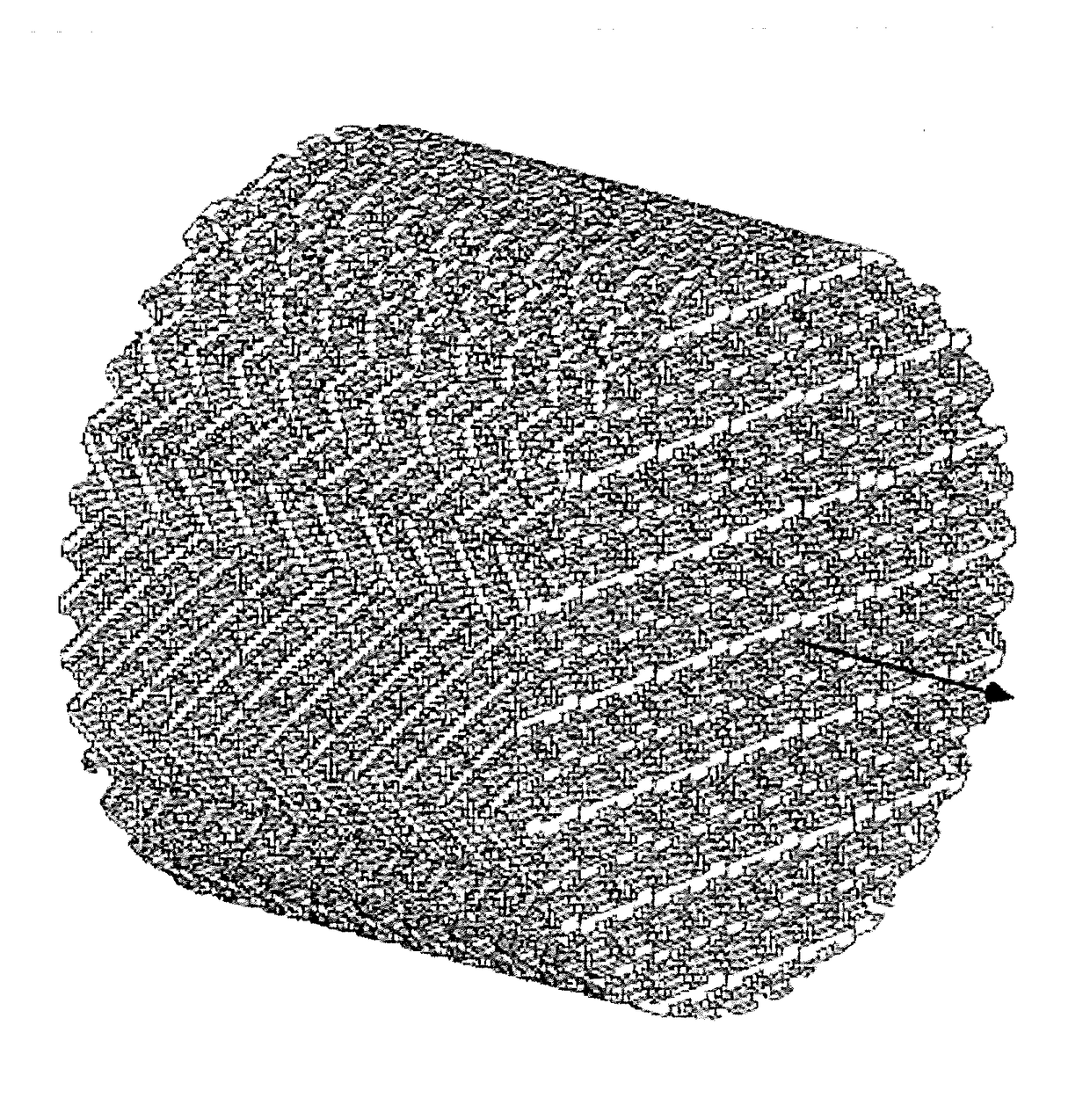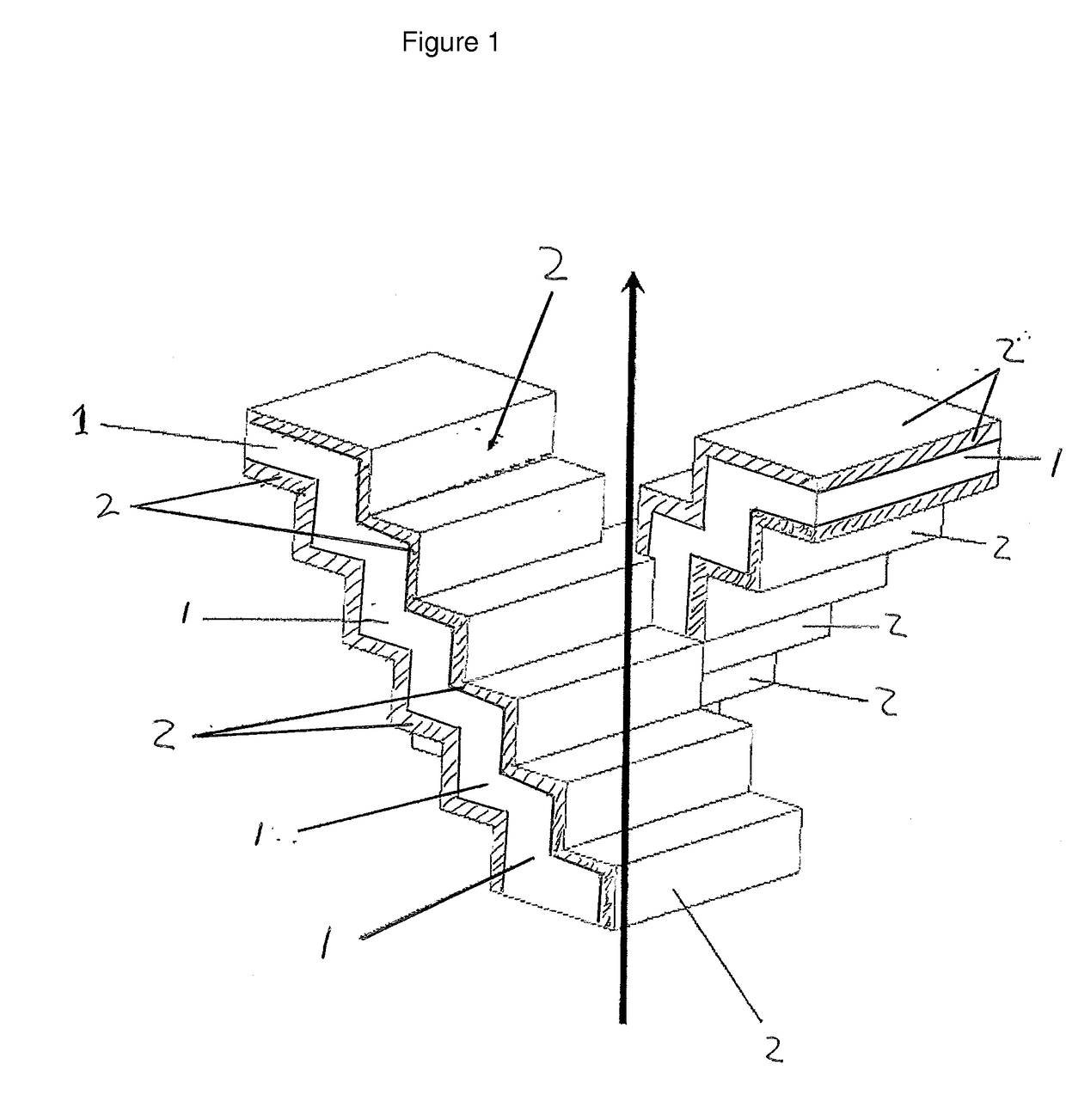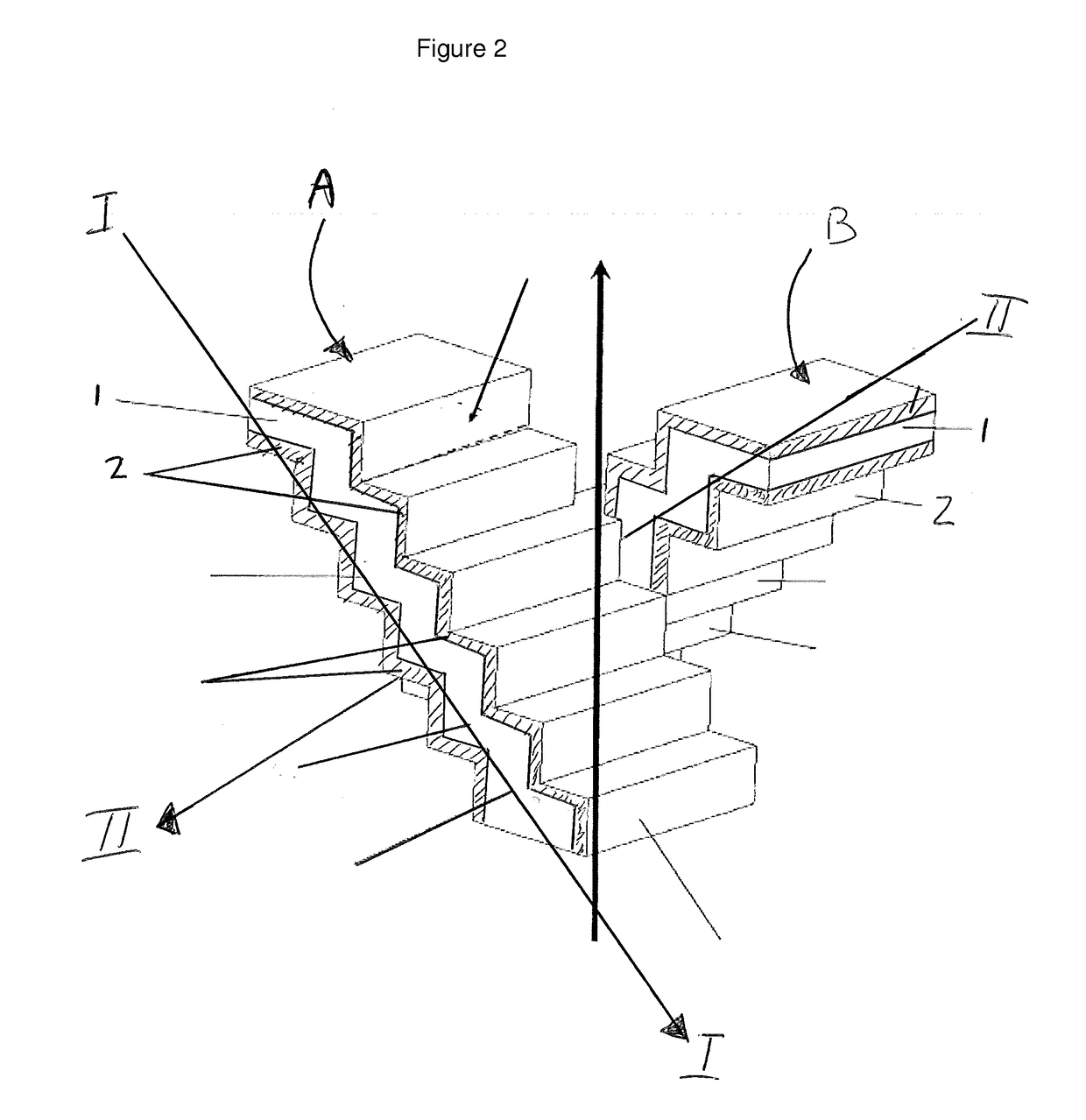Catalyst
- Summary
- Abstract
- Description
- Claims
- Application Information
AI Technical Summary
Benefits of technology
Problems solved by technology
Method used
Image
Examples
example 1
Catalyst Preparation
[0053]Stepped-shape substrates were obtained by means of 3D printing. The 3D printer used is CONCEPTLaser M2 3D-printer. The printer can be programmed to print a substrate as depicted in one of the figures.
[0054]In general a computer can be programmed to operate a printer such that it will manufacture a substrate by performing the steps of:[0055]i) forming a layer of a matrix material from a powder or paste;[0056]ii) binding or fusing the powder or paste in said layer according to a predetermined pattern; and[0057]iii) repeating (i) and (ii) layer upon layer to form a catalyst wherein each subsequent layer is bound or fused to a preceding layer. By repeating these steps several times a structure (the substrate) can be obtained having stepped-shape channels which correspond to the channels of a catalyst according to the present invention.
[0058]For this example two substrates were manufactured according to this method. One substrate structure was manufactured from ...
example 2
Hydrocarbon Synthesis
[0067]The catalysts obtained in example 1 were reduced and subjected to a Fischer-Tropsch synthesis. The conditions at which the Fischer-Tropsch reaction was conducted are mentioned in table 1. The comparative examples are based on extrudates and are well known in the art. These can be obtained as explained in WO97 / 00231 and can be extruded in accordance with WO2012 / 084788.
TABLE 1Comp.Sample 1Comp.Sample 2CatalystExtrudateSteppedExtrudateSteppedshape / support(alumina)(titania)Temperature488488488488(K)H2 / CO ratio1.91.91.91.9Syngas19191818pressureCO78787070conversionWTY160687156324C5+60855989selectivity(wt %)CO22.20.82.35.1selectivity(%)
[0068]From the results of Example 2 it is clear that the C5+ selectivity is much higher for the two catalysts according to the present invention.
example 3
Catalyst Preparation
[0069]A catalyst according to the present invention can be obtained by using a screen printer XH STS from ASYS EKRA. The printer can be programmed to print a catalyst as depicted in one of the figures.
[0070]In general the printer will manufacture a catalyst wherein, the catalyst has channels for a reaction fluid to flow through and said channels having walls, said walls comprising a catalytic material, by executing a method comprising the steps of:[0071]i) forming a layer of a catalytic material and a matrix material;[0072]ii) binding or fusing the powder or paste in said layer according to a predetermined pattern; and[0073]iii) repeating (i) and (ii) layer upon layer to form a catalyst wherein each subsequent layer is bound or fused to a preceding layer.
PUM
| Property | Measurement | Unit |
|---|---|---|
| Fraction | aaaaa | aaaaa |
| Thickness | aaaaa | aaaaa |
| Flow rate | aaaaa | aaaaa |
Abstract
Description
Claims
Application Information
 Login to View More
Login to View More - R&D
- Intellectual Property
- Life Sciences
- Materials
- Tech Scout
- Unparalleled Data Quality
- Higher Quality Content
- 60% Fewer Hallucinations
Browse by: Latest US Patents, China's latest patents, Technical Efficacy Thesaurus, Application Domain, Technology Topic, Popular Technical Reports.
© 2025 PatSnap. All rights reserved.Legal|Privacy policy|Modern Slavery Act Transparency Statement|Sitemap|About US| Contact US: help@patsnap.com



